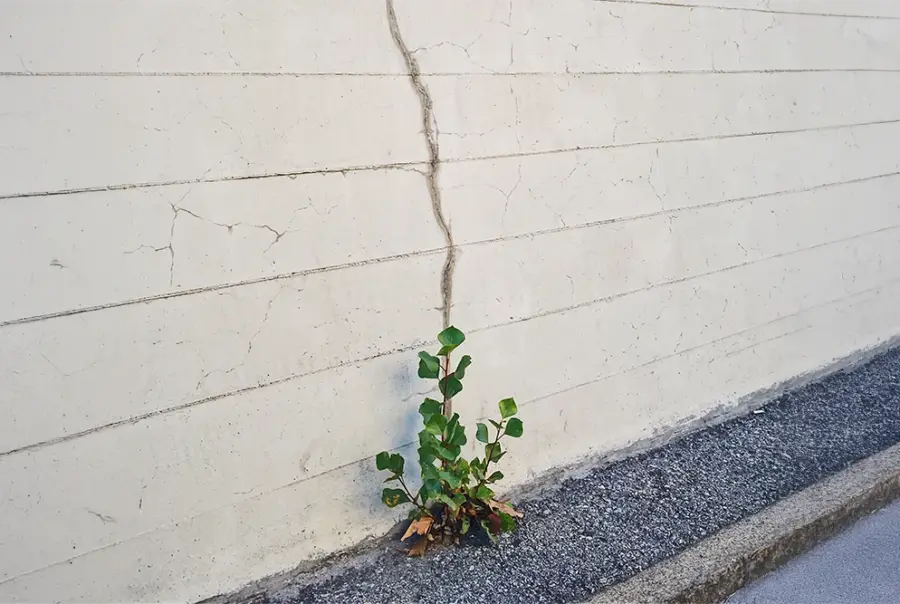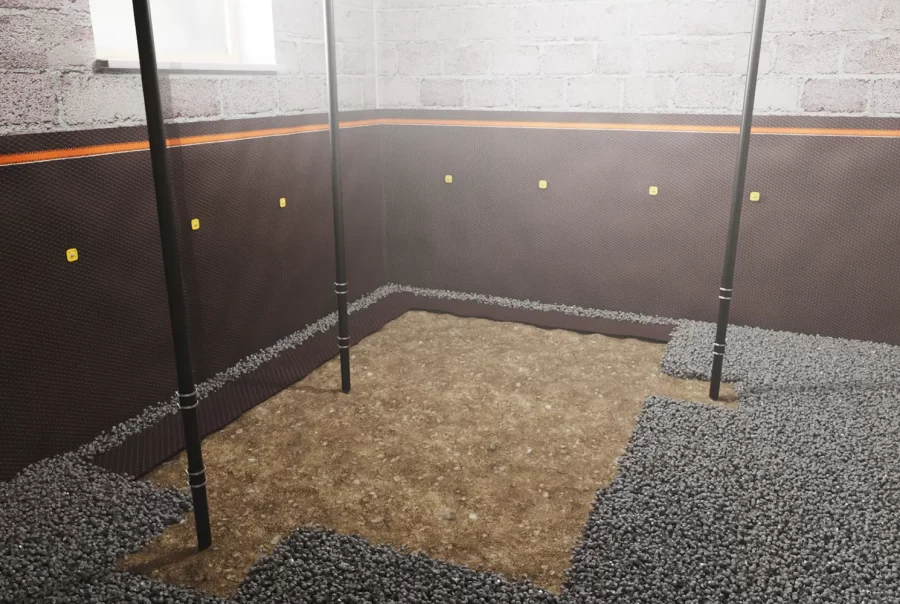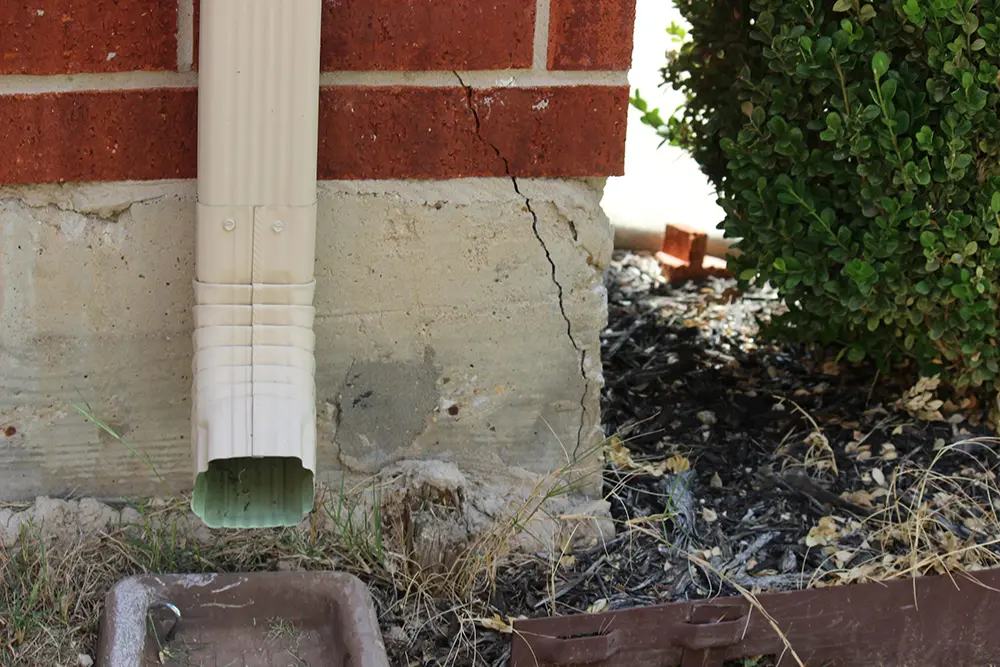Canada is one of the regions where foundation problems occur most frequently. According to analysts from Future Market Insights, the local market for repairing foundation issues is valued at $82.2 million. This reflects the scale of the challenges and the demand for services of this kind in the region. And rightly so.
Due to a rather complex climatic landscape, frequent rains, and large volumes of snow, there are risks of land flooding, which, combined with severe frosts, tree roots, and soil shifts, negatively affect the foundation.
Today, you will learn more about the factors that influence the condition of building foundations, the indicators that point to the presence of problems, and the solutions that should be taken in different situations.
Common Causes of Foundation Problems
Speaking of the factors that lead to the emergence of foundation issues house, aside from obviously bad structural decisions, they may include the following:
- Soil Movement and Expansion
- Poor Drainage
- Plumbing Leaks and Water Damage
- Tree Roots Near Foundation
- Weather Conditions
Please note that most of the listed problems are typical specifically for Canada and occur much less frequently in other regions of the world. The impact of each of these factors can range from minor, purely cosmetic issues to fatal consequences for the structure and its occupants. So, let’s take a closer look at these aspects.
Soil Movement and Expansion
Your plot may look flat and well-maintained, without any surface deformations. No reason to worry, right?
But if you dig deeper, you may find voids underneath the area or nearby, which gradually collapse under the influence of external factors.
Or another situation — nearby construction, geological exploration, etc. Such stress on the soil causes surface horizontal shifts that exert pressure on the foundation, which leads to the emergence of problems, such as cracks, destruction, and so on.
Poor Drainage
This is more likely a reason connected with a bad foundation — or rather, with mistakes made during the design, formation, and laying of the building’s base. For example, the absence of waterproofing or channels for draining excess moisture. This is especially critical if there are bodies of water or groundwater nearby.
Clear signs of foundation issues of this type may include constant basement flooding or puddles near the building that take a long time to dry.
Plumbing Leaks and Water Damage
This is another clear sign of a bad foundation and a contributing factor to potential damage — especially when the communications were poorly planned during the house’s design and construction phase. Or if they were damaged during repairs or other works.
In such cases, water may leak even inside the walls, flowing down to the foundation of the house and leading to foundation issues. Over time, the problem will deepen, and as a result, very unpleasant consequences may arise.
Tree Roots Near Foundation
The roots of trees growing next to buildings can be a cause of damage to their foundations. While small decorative or fruit plants may not cause much harm, issues often arise with trees like walnuts, oaks, etc.
The negative effect may occur either due to direct root pressure on the foundation or through root intrusion into cracks, gaps, or holes. The latter case is especially dangerous because it can potentially lead to deformation of the building’s base and, eventually, the destruction of the entire structure. Or even the appearance of plants in your basement — which is not very pleasant either.
Weather Conditions
Heat, rain, snow, wind, temperature modes, and fluctuations — all these are influencing factors that lead to the emergence of foundation issues. For example, if the building’s foundation is just concrete mix, over time it can:
- shrink and be washed away even by a weak water flow;
- crack due to a sharp temperature drop (from plus to minus);
- gradually erode and weaken from the top layer.
Most of the consequences are visible, but they still need to be identified and the cause eliminated. Otherwise… major structural repairs will definitely be needed.
Why Early Detection Matters
Any doctor will tell you that it’s better to treat the cause than to fight the consequences. So, at the first signs of foundation problems, a comprehensive diagnostic should be conducted and timely repairs started. The advantages of this are:
- Preventing the situation from worsening to the point of needing a new foundation;
- Localizing damage and quickly fixing it to avoid the spread of the problem;
- Accelerating the repair process, since fixing one issue is easier than dealing with several at once;
- Making the repair easier by working on the source of the damage rather than its effects;
- Reducing costs, as early-stage repairs are less expensive than full building restoration.
So, if you notice even the slightest signs of problems, a full structural diagnosis should be conducted — either on your own (if you have the required experience and skills), or with the help of experts from Quality Age Build.
Warning Signs of Foundation Problems
You may inspect the outer part of the building’s foundation and not see any foundation issues. However, in most cases, their presence is indicated by elements you either overlook or look for the causes elsewhere. For example:
- Cracks in Walls or Floors.
- Uneven or Sloping Floors.
- Doors and Windows Sticking or Misaligned.
- Gaps Around Window Frames or Exterior Doors.
- Separation of Walls from the House.
- Drainage
- Tilted or Cracked Chimney.
You may wonder — what does this have to do with the foundation? The connection is the most direct one possible. Let’s delve into the details of each of these warning signs.
Cracks in Walls or Floors
Foundation Cracks are not always external. There may very well be an internal crack with partial destruction or shifting of the foundation, which can be identified by… Cracks in the walls and floor.
Of course, they can also appear for other reasons, but in 90% of cases, the cause is problems. How to confirm the assumption? Ideally – inspect the entire foundation comprehensively. If you don’t have this possibility, check the angle with a level near the damaged areas. If you see even a few degrees of deviation – there’s your indicator.

Uneven or Sloping Floors
Almost every type of flooring shows an immediate response to problems. For example, wooden flooring can suddenly sag closer to the wall, or the boards may simply deform and no longer form a flat surface.
The same applies to concrete slabs, which can also sink, develop cracks or chipping, holes, especially if slabs without additional reinforcement are used.
Doors and Windows Sticking or Misaligned
Even regular wooden doors and windows can indicate foundation issues. For example, they may not close tightly, not open fully, or hang in an unusual position. Of course, the cause could be the hinges or deformation of the frames, but only in isolated cases.
Confirmation of the assumption – metal-plastic windows and doors, which also warp due to problems.
Gaps Around Window Frames or Exterior Doors
The appearance of gaps around window or door frames can also be a signal. This happens when the foundation sags significantly in one spot, causing the wall and the elements placed on it to tilt.
This symptom can be noticed long before a significant opening forms. A light draft in a usually airtight room may indicate the presence of gaps, cracks, etc.
Separation of Walls from the House
Even more telling than other signs of foundation issues is the situation where one of the walls separates from the main structure. Usually, this is vertical separation at one of the corners of the house, although there may also be a crack elsewhere, with partial settling or displacement of part of the wall.
This is a foundation problem indicator that is not just cosmetic but affects the safety of the building’s use. So in such cases, it is worth immediately calling the specialists at Quality Age Build and beginning facade repair.
Drainage Issues
Have you noticed moisture accumulating on the floor, walls occasionally appearing wet, or the presence of a moldy smell in the room? It could be an issue with plumbing or the utilities. In the latter case, the cause may not be pipe leaks or rust but foundation issues.
This occurs when the foundation sags or partially collapses, and the walls begin to deform along with the communications, such as the drainage systems.
Another indicator could be water in the basement, accumulating on the floor, dripping from the ceiling, or running down the walls. This indicates facade deformation and compromised waterproofing.
Tilted or Cracked Chimney
The final item on the current list of foundation problems indicators is the chimney. It is usually installed at a 90-degree angle, so any unusual tilt indicates significant deformation of the building’s base. Why? Because if the chimney tilts, the entire structure is skewing, pulling the pipe along with it—together with the walls and the roof.
So, if you see indicators similar to those listed, it’s worth being concerned and checking the foundation for damage. To be fair – there may be more causes of such indicators than just the foundation, but it’s better to make sure that’s the case than to deal with far worse problems than a deformed floor surface.
How to Diagnose Foundation Problems
To determine whether the cause of the building’s structural issues is indeed foundation issues, it is necessary to check whether the damage corresponds to the factors described in the previous sections of the material. If you lack the necessary experience or are unsure whether the foundation is the actual issue, consider seeking assistance from the experts at Quality Age Build.
Believe us, a comprehensive and high-quality diagnosis is better than dealing with the consequences of the deterioration of your building’s foundation.
Effective Solutions for Foundation Problems
Once the cause of problems has been identified and localized, you can proceed to repairing the base of the house. This can be done using:
- Underpinning.
- Slabjacking.
- Improved Drainage Systems.
- Root Barriers for Tree Protection.
- Waterproofing.
You can certainly perform part of the work yourself, but not all of it. Why? We explain below.
Underpinning
If the damage and foundation issues are purely external and cosmetic, you can easily repair them yourself using special adhesive mixtures and the skilled hands of a neighbor or friend. However, if the problem runs deeper, you will need a specialized underpinning Toronto service and professional contractors.
Slabjacking
If you have the tools and materials, you can try to repair a sunken foundation yourself. However, you’ll have to work hard if there are large voids in the concrete base, damage to the upper layers, etc. And that’s assuming you don’t need to lift the entire building to access the damaged area. So, the help of professionals in this case will definitely not be superfluous.
Improved Drainage Systems
If the problems are related to drainage malfunctions, you’ll have to use professional services. Repairing such issues almost always involves structural changes and modernization. That’s why French Drain Toronto will become exactly the support you need to ensure your building remains dry and efficiently drains moisture, regardless of the source that caused the problem.

Root Barriers for Tree Protection
To fix foundation issues caused by pressure or the intrusion of tree roots into the building’s base, you may also need assistance. Of course, you can manually dig up the area and cut the root systems, but this will be a temporary and unreliable solution. That’s why it’s better to turn to professionals and install special systems to protect the foundation from tree roots on your property.
Waterproofing
Basement Waterproofing Toronto is the only reliable way to protect yourself from problems with moisture accumulation in basement premises and foundation destruction caused by its constant impact. Of course, you can install waterproof barriers on your own, but how effective and reliable this solution will be is an open question.

How Can You Avoid Foundation Issues?
In short, after the home’s commissioning by the developer – no way. That is, it’s better to anticipate these problems already at the design stage by equipping the foundation with barriers, reinforcements, and so on.
But if you understand that, over time, you will face the challenges described in the article, the only option is to use the services of Quality Age Build and reinforce the foundation in advance by performing a comprehensive modernization.
When to Call a Professional
If a surface (cosmetic) repair is needed – you can handle it yourself. But if the damage is deeper and starts spreading to the rest of the house – it’s time to call professionals.
So don’t delay, call the engineers at Quality Age Build to assess the damage and eliminate it promptly.

Conclusion
Tilted furniture, windows and doors, cracks in the walls, floor deformation, or “fatigue” of the chimney are clear indicators that your building lacks reliable support. Even if you don’t feel any discomfort now, over time there will be mold, drafts, or even another entry point into your home. And you’re lucky if, in a potentially dangerous situation, the damage is limited to furniture and appliances.
Therefore, delaying foundation repairs is a fatal mistake that can cost you your roof, health, or even life.
Don’t want to test your luck? Reach out to the team at Quality Age Build for a professional evaluation of your foundation’s condition and prompt repair services!
Contact us
Quality Age Build Inc is at your service across the GTA. Request a quote today and ensure your property is in expert hands.
Related Services
Pair our expert guidance with our foundation services to establish a solid base for your build, ensuring durability and peace of mind.
FAQs
Can minor cracks in the wall mean serious foundation trouble?
Not always. You need to check exactly where the cracks appeared and whether there were other factors that could have damaged the wall. If no visible cause is found – it’s time to check the foundation.
How much does it cost to fix foundation problems?
Even a preliminary estimate can only be made after assessing the damage. Often, the main causes are not visible during the initial inspection, so eliminating them may go beyond a typical budget.
Can weather or seasonal changes cause foundation shifts?
Yes and yes again. Even a sharp temperature drop can cause problems – not to mention heavy and constant rainfall, soil shifts, and so on.

